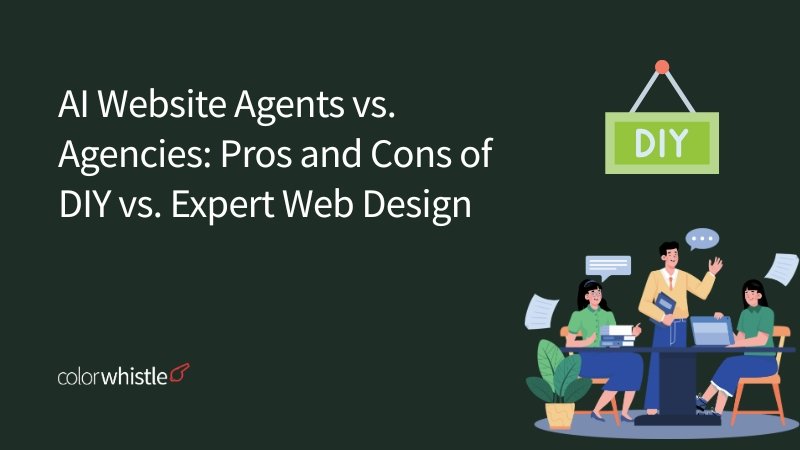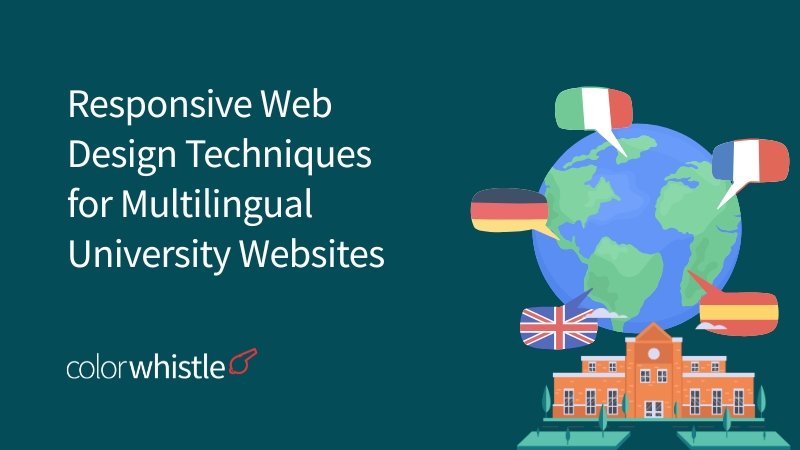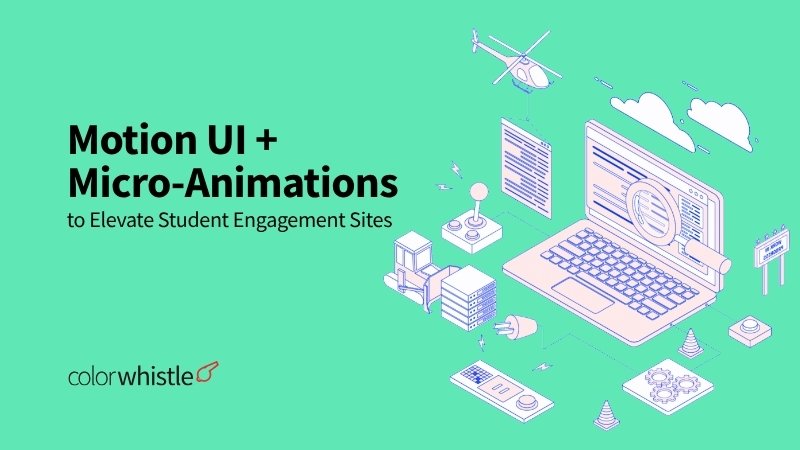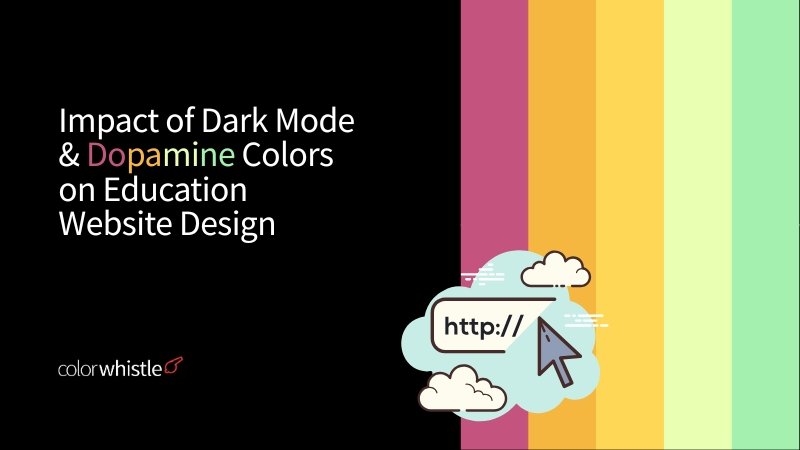The rise of AI agents has completely changed how website development is done. Startups and first-time business owners now have tools that let them create DIY websites with minimal coding, while professional designers and AI development companies are integrating AI to deliver smarter, faster, and highly optimized websites.
From agentic systems that automate layouts to AI-driven analytics guiding design decisions, the web design landscape in 2025 is a mix of DIY experimentation and professional precision. In this blog, we’ll explore the pros and cons of building your website yourself with AI versus outsourcing to professionals using AI, and why the right choice depends on your business goals.
The Rise of AI Agents in Web Design
AI agents aren’t just buzzwords anymore; they’re the backbone of modern web design. These smart systems can:
Automate Layouts: AI tools like Wix ADI and Bookmark can generate entire website layouts based on user input, saving time and effort.
Optimize User Experience: AI analyzes user behavior to suggest design tweaks that enhance engagement.
Personalize Content: Dynamic content generation tailored to individual user preferences is now possible.
With AI handling heavy lifting, designers and developers can focus more on creativity and strategy.
DIY AI Agents for Web Design
For many, DIY AI tools are the go-to choice. Platforms like Wix, Squarespace, and GoDaddy offer intuitive interfaces that let users build websites without any coding knowledge. These tools provide:
Drag-and-Drop Builders: Easy-to-use interfaces that allow users to design websites by simply dragging elements onto a page.
AI-Powered Templates: Pre-designed templates that adapt based on user input, ensuring a personalized look.
SEO Optimization: Built-in tools that help optimize websites for search engines, improving visibility.
These features make it accessible for startups and first-timers to establish an online presence quickly.
Statistics on DIY Websites in 2025
- 73% of small businesses in the U.S. have a website – Nearly three-quarters of small businesses have established an online presence, though more than one in four still lack their own site. (Source: Zippia via Wix.com)
- 70% of small business websites lack call-to-action buttons – The majority of B2B small business websites fail to include crucial call-to-action elements on their home pages that could convert visitors into customers. (Source: My Codeless Website)
- 82% of small business websites don’t link to social media – Most small business sites miss opportunities to connect with customers by not adding their social media accounts to their website design. (Source: My Codeless Website)
- 39% of companies still need a website – Only 71% of businesses globally have a website as of 2023, meaning 39% are still potential clients for web designers or DIY website builders. (Source: My Codeless Website)
- 88% of users don’t return after a bad website experience – Sites with poor navigation, unengaging design, or lacking a customer-centric approach have far worse visitor retention (Source: Forrester Research via KrishaWeb)
- Website builders cost $9.99-$50/month vs. $10,000 for professional design – DIY website builder platforms range from approximately $10 to $50 monthly, while hiring a professional designer costs around $10,000 upfront. (Source: My Codeless Website)
- Companies redesign websites every 2 years on average – Businesses now redesign their websites every 1.5 to 2.5 years on average, down from 3-4 years in 2021. (Source: My Codeless Website)
- 94% of users identify easy navigation as most important – Easy navigation was identified as the most preferred website feature by 94% of respondents, even above beautiful design (Source: My Codeless Website)
- 0.05 seconds to form first impression – It takes only 0.05 seconds for visitors to form an opinion about a website based on its design. (Source: My Codeless Website)
- 57% won’t recommend a poorly designed website – More than half of online users emphasized they would not recommend a company if its website design was poorly executed. (Source: My Codeless Website)
- Over 18 million Websites Built Using DIY Website Builders – In 2025, more than 18 million websites have been created using DIY website builders like Wix, Squarespace, and GoDaddy Website Builder. (Source: Site Builder Report)
- In 2025, 73% of small businesses in the U.S. have a website, up from 64% in 2020, indicating a growing trend among startups to establish an online presence. (Source: network solutions)
Also Read
CMS Website Market Share Among All Business Websites
Content Management Systems (CMS) like WordPress dominate the web development space:
WordPress powers 62.7% of CMS websites.
Shopify holds 6.7% of the CMS market share.
Wix and Squarespace account for 3.9% and 3.0%, respectively.
These platforms offer scalability and flexibility, making them suitable for businesses aiming for long-term growth.
- Shopify is the second-most popular CMS with 6.7% market share – Shopify holds 6.7% market share among sites using a CMS and is used by 4.7% of all websites surveyed. (Source: shoptrial)
- In 2024, Wix grew by 13%; this year, it might grow by 15.2% in 2025. (Source: Meetanshi)
- Wix Dominates the DIY Website Builder Market – Wix holds a 45% market share in the DIY website builder space, making it the most popular platform among users. (Source: Site Builder Report)
- Squarespace Holds an 18% Market Share – Squarespace is the second most popular DIY website builder, with an 18% market share (Source: Site Builder Report)
- GoDaddy Website Builder Accounts for 10% Market Share – GoDaddy’s Website Builder ranks third in market share, holding 10% of the DIY website builder market. (Source: Site Builder Report)
Web Design for Marketing vs. Non-Marketing Websites
Understanding your website’s purpose is crucial before making design decisions, as it directly influences functionality, complexity, and user experience.
Marketing Websites: Conversion-Focused Design
Marketing websites are built to drive business results through lead generation, brand awareness, and customer engagement.
Key Characteristics:
- Dynamic Content: Regularly updated blogs, landing pages, and promotional content for SEO performance
- Marketing Integration: Connected to CRM systems, email platforms, analytics tools, and advertising pixels
- Conversion Elements: Strategic CTAs, lead forms, live chat, and social proof (testimonials, reviews)
- A/B Testing Capability: Testing different designs and copy to optimize conversions
- SEO Optimization: Fast loading, mobile responsiveness, and optimized meta tags
Examples: E-commerce stores, SaaS platforms, agency sites, lead generation pages
Non-Marketing Websites: Information-First Design
Non-marketing websites serve informational or functional purposes with simpler, content-focused designs.
Key Characteristics:
- Simpler Architecture: Straightforward navigation with fewer pages
- Static Content: Information that changes infrequently
- Minimal Interactivity: Fewer forms and tracking scripts for faster, cleaner experience
- Content-Centric: Emphasis on typography, readability, and clear hierarchy
- Lower Maintenance: Less frequent updates and simpler infrastructure
Examples: Personal portfolios, knowledge bases, company intranets, documentation sites
How AI Enhances Both Approaches
For Marketing Sites:
Generates SEO-optimized content and product descriptions
Personalizes content based on user behavior
Analyzes conversion data and identifies optimization opportunities
For Non-Marketing Sites:
- Organizes content and improves navigation structure
- Automates accessibility features (alt text, contrast checking)
- Provides insights into how visitors consume information
The key is to identify your primary objective and design accordingly, adding complexity only where it truly serves that core purpose.
Web Design for APIs and Agentic Systems
As we move into an increasingly AI-driven web ecosystem, designing APIs and agentic systems (AI agents that can browse, interact with, and extract data from websites) is becoming as important as designing for human users.
What Are Agentic Systems?
Agentic systems are AI-powered tools that autonomously navigate websites, extract information, complete tasks, and interact with web interfaces on behalf of users. Think of chatbots that can book appointments, AI assistants that compare prices across sites, or automated systems that aggregate data from multiple sources.
Examples: ChatGPT with browsing capability, Claude with web search, automated data scrapers, AI shopping assistants, enterprise automation tools
Why APIs Matter for Modern Web Design
An API (Application Programming Interface) allows external applications to communicate with your website programmatically, without needing to parse HTML like a human would.
Key Benefits:
- Faster Data Exchange: Direct data access without loading full web pages
- Reliability: Structured, predictable data format that doesn’t break when you redesign your site
- Scalability: Handle thousands of requests efficiently
- Partner Integrations: Enable other businesses to build on top of your platform
- AI-Friendly: Machine-readable data that AI agents can easily consume
Professional Website Design Tools Market Growth
Market Size & Growth Projections
Global market value reached $58.5 billion in 2022, projected to grow to $95.4 billion by 2030
Compound Annual Growth Rate (CAGR) of 8.5% from 2023 to 2030
North America leads with 35% of global revenue ($20.5 billion), followed by Europe, Asia Pacific, Middle East/Africa, and South America
Web development market (which includes design tools) valued at $60.7 billion in 2022, expected to reach $96.7 billion by 2028 (8.08% CAGR)
Why It’s Growing This Much
- Rising demand from SMEs & startups: Smaller & medium businesses want decent websites without huge budgets. They prefer UI/UX tools, no-code / low-code platforms, and tools that reduce dependencies on big agencies.
- AI agent/assistant integrations: Design tools embedded AI for layout suggestions, image generation, responsive adjustments, content recommendation. This reduces friction and time.
- Mobile-first & UX expectations: Users expect slick experience on phones; design tools that support responsive / adaptive design are in demand.
- Global internet penetration & digital push: Emerging markets are catching up; businesses in Asia-Pacific, Latin America are pushing more into web presence; hence demand for tools suited to different tech infrastructure and budgets.
- Recurring revenue & SaaS model dominance: Many design tools, builder tools, and CMSs are subscription/SaaS, which supports reinvestment, faster iteration.
Also Read
How ColorWhistle Uses AI in Web Design
At ColorWhistle, AI enhances creativity and efficiency at every step, not replacing it.
- AI Discovery & Strategy – We use AI tools to analyze industries, competitors, and audiences to shape UX decisions early.
- Design Assistance – AI suggests layouts, color palettes, and structures; our designers fine-tune them for a human touch.
- Smart Content & SEO – AI helps generate SEO-friendly content, meta tags, and headings faster.
- Performance Optimization – AI monitors site speed, UX, and SEO issues for real-time improvement.
- Agentic Integrations – We build intelligent, API-powered sites with adaptive content and automation.
AI keeps our designs efficient, data-backed, and ready for the next evolution in digital experiences.
Leveraging AI for Quick Builds & GTM Practices
AI doesn’t just speed up web design; it keeps projects aligned with real-world business goals. By using AI:
Rapid Prototyping – Generate functional prototypes fast and test ideas early.
Market-Ready Features – Ensure websites integrate essential GTM tools like analytics, CRM, and marketing automation.
Data-Driven Iteration – Use AI insights to tweak design, content, and performance before launching.
This approach lets startups and businesses launch smarter, faster, and fully equipped sites without cutting corners.
Wrap-Up
AI is changing the way websites are built. Whether you’re using DIY tools or working with professionals, AI helps speed up design, optimize performance, and align websites with business goals. The right approach depends on your needs, but in any case, AI makes web design smarter, faster, and more efficient.
Browse through our ColorWhistle page for more related content and to learn about our services. To get in touch with us and learn more about our services, please visit our Contact Us page.





